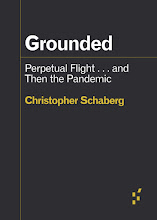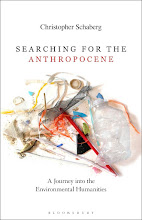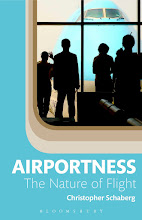1. My strategy for dining in airports can't quite be called "eating local," because the word local doesn't exactly fit with airports. But let's call it thinking regionally. So, in San Francisco I always eat at the sushi place in the International Terminal. In Minneapolis, I go for the walleye in the mezzanine restaurant between the C and B concourses. Charles de Gaulle: baguette au fromage. In my own Louis Armstrong airport, a bowl of gumbo and some red beans. As for Detroit? Well, I hear there's a great new wine room in the McNamara Terminal. (Regional? Maybe not. But good wine always wins out.) Wherever you are flying through or to, study the airport maps before your trip: there's usually at least one restaurant of regional value in every airport, and you'll tend to get the freshest ingredients in those establishments.
2. I am interested in how airports appear in a range of cultural expressions, from literature to movies to the visual arts. What I find curious is how the figure of airport dining has been somewhat constant over the recent history of air travel. When I look at Arthur Hailey's 1968 pot-boiler Airport in which the main character has a hurried coffee in the airport restaurant; or at Garry Winogrand's airport photographs from the late 50s through the early 80s with waiting travelers looking haggard and bleary-eyed over lunch tables; or at Don DeLillo's characters killing time with cocktails before their flights (such as in the 1977 novel Players)—in all these examples I see a reoccurring theme of palpable tension, of people not able to relax enough to enjoy their sustenance. Sometimes one hears nostalgia for a time of flight when travelers were less rushed, and airline and airport employees were formal and treated travelers like royalty. But from my research, it seems as though air travel has always involved a certain malaise or a core of anxiety that makes dining a vexed enterprise. This might explain the success of Starbucks in contemporary American airports, those ubiquitous and recognizable facades where travelers can buy a sandwich or a scone, and a coffee or juice, at any time of day just to get it over with and go wait at their gates for their flights, nibbling or munching and sipping their drinks lest there be a delay. Somewhat against its traditional sensuous coffee-shop image, Starbucks manages to peddle airport dining without any illusions of relaxation or enjoyment. Not that one necessarily has to follow this model; one can try to find the regional food nestled in a nook further down the concourse.

Photo by J. Ryan Williams
















